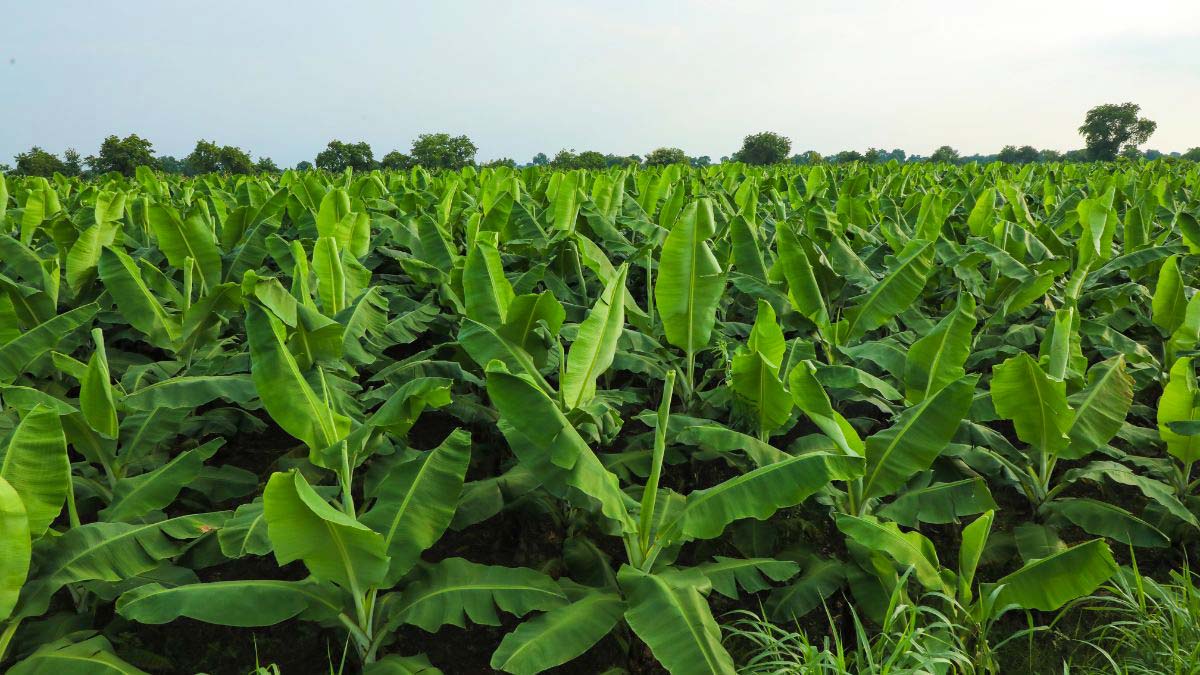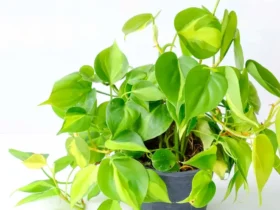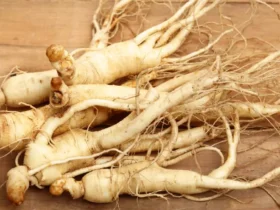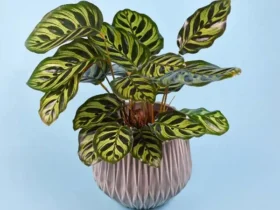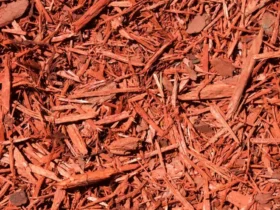There are two main types of banana plants: dessert bananas and plantains. Dessert bananas are sweet and often eaten raw, while plantains are starchy and used for cooking.
Each type has different varieties, such as the Cavendish banana and the cooking banana. Bananas are a versatile and popular fruit that is grown in tropical regions around the world. They are a good source of nutrients and are enjoyed in a variety of ways, from being eaten on their own to being used in smoothies, baked goods, and savory dishes.
Understanding the different types of banana plants can help in choosing the right variety for various culinary purposes and home growing.
Cavendish

Bananas are one of the most popular fruits worldwide, and the Cavendish variety is one of the most widely cultivated types. Originally from Southeast Asia, the Cavendish banana is known for its uniform size and bright yellow color.
Origin And Characteristics
The Cavendish banana is believed to have originated in China, and were later introduced to Mauritius in the Indian Ocean. The plant is characterized by its large, elongated leaves and sturdy stem. The bananas are typically straight, with a slightly tapering shape, and are known for their creamy texture and sweet flavor.
Cultivation And Uses
Due to its commercial viability, the Cavendish banana is extensively cultivated in tropical and subtropical regions across the globe. The plant requires well-drained soil and ample sunlight for optimal growth. It is utilized for various purposes, including consumption as a fresh fruit, as well as in the production of banana-based products such as juices, smoothies, and desserts.
Lady Finger
Lady Finger, also known as “Musa acuminata,” is a type of banana plant commonly grown for its slender, sweet fruit. This variety is popular among home gardeners and is known for its high productivity and ease of care. With its delicate taste and unique appearance, the Lady Finger banana plant is a prized addition to any garden.
Lady Finger bananas, also known as “Sugar” bananas, are a popular dessert banana variety known for their small size, sweet flavor, and delicate fragrance. These petite bananas are elongated and boast a creamy, slightly granular texture, which makes them perfect for snacking or adding to desserts. In this section, we will delve into the origins and characteristics of Lady Finger bananas, as well as their cultivation and uses. “`html
Origin And Characteristics
Originating from Southeast Asia, Lady Finger bananas are believed to have been first domesticated in the region that encompasses present-day Malaysia and Indonesia. Also, these bananas are often found in tropical and subtropical regions worldwide due to their adaptability to various climates. Characterized by their slender, cylindrical shape, Lady Finger bananas are usually no longer than six inches. Their thin, bright yellow skin conceals the soft, creamy flesh within. The flavor profile of Lady Finger bananas is notably sweet, often with subtle hints of honey and vanilla. Additionally, these bananas are typically seedless, adding to their appeal as a convenient and enjoyable snack.
Cultivation And Uses
Lady Finger bananas are cultivated in tropical and subtropical regions, where they thrive in well-drained, fertile soil and warm, humid climates. These bananas are propagated through offshoots or suckers, with optimal growth occurring in areas with consistent rainfall and ample sunlight. The versatile nature of Lady Finger bananas extends beyond their appeal as a fresh snack.
They are commonly used in baking and cooking due to their delectable flavor and tender texture. Additionally, these bananas can be dried, pureed, or frozen for extended use in a variety of culinary applications. Furthermore, Lady Finger bananas are prized for their nutritional value, as they are a good source of potassium, vitamin C, and dietary fiber. Whether enjoyed fresh, incorporated into baked goods, or used in smoothies and desserts, these bananas offer a delightful addition to a well-rounded diet.
Plantain

Plantains are a popular type of banana plant that is widely cultivated and used for various purposes. These large, starchy fruits are similar to bananas but are typically cooked before consumption. Plantains have a rich history, unique characteristics, and are an important staple in many cuisines around the world.
Origin And Characteristics
Plantains originated in Southeast Asia and were later introduced to Africa by Arab traders. They belong to the Musa genus, which also includes other types of bananas. Plantains differ from sweet bananas in terms of their starch content, flavor, and uses. They are larger, elongated, and have a thicker peel that changes from green to yellow or black when ripe.
- Plantains are generally starchier and less sweet compared to sweet bananas.
- Their firm texture and lower sugar content make them suitable for cooking rather than eating raw.
- When cooked, plantains develop a creamy, slightly savory flavor and can be used in both savory and sweet dishes.
- They are highly versatile and can be fried, boiled, baked, or grilled.
- Plantains are a good source of dietary fiber, vitamins A and C, and potassium.
Cultivation And Uses
Plantain plants are mainly cultivated in tropical and subtropical regions with high rainfall and temperatures. They thrive in well-drained soils and require plenty of sunlight to grow. The cultivation process involves planting suckers, which are small plantain shoots that grow from the base of mature plants.
- Plantains are a staple food in many countries, particularly in Africa, Central America, and the Caribbean.
- They are used in a wide range of dishes, including soups, stews, curries, desserts, and snacks.
- Plantains can be sliced or mashed and used as an ingredient in fritters, chips, and pancakes.
- They are often cooked with spices, herbs, and other ingredients to enhance their flavor.
- Plantains can also be dried and ground into flour to make various culinary products.
The versatility, nutritional value, and unique taste of plantains make them a popular choice for both home cooking and commercial food production. From savory to sweet preparations, plantains offer a delightful culinary experience that is enjoyed by many cultures worldwide.
Red Banana

The Red Banana is a fascinating variety of banana plant that stands out for its vibrant red-colored peel. This unique characteristic sets it apart from the traditional yellow bananas we are accustomed to. In this article, we will explore the origin, characteristics, cultivation, and uses of the Red Banana.
Origin And Characteristics
The Red Banana is believed to have originated in Southeast Asia and is widely cultivated in tropical regions around the world. This variety of banana plant can grow up to 20 feet in height and features large, broad leaves that give it an exotic appearance. Its distinct red peel is usually thinner than that of a yellow banana, but the flesh inside remains creamy and sweet, offering a delightful flavor.
Cultivation And Uses
Growing Red Bananas requires similar conditions to other banana varieties. They thrive in warm climates with abundant sunlight, well-drained soil, and high humidity. These resilient plants can be cultivated in home gardens or on large plantations, provided they receive proper care and maintenance.
The Red Banana is not just visually appealing; it also packs a nutritional punch. Rich in vitamins C and B6, fiber, and potassium, it contributes to a healthy diet. This variety is often enjoyed as a fresh snack, blended into smoothies, or used as an ingredient in various culinary creations.
If you are looking for a unique and exotic twist to your fruit basket, the Red Banana is an excellent choice. Its eye-catching appearance and delicious taste make it a popular option for enhancing the visual appeal of desserts, such as fruit salads, cakes, and ice creams. Additionally, the Red Banana can be cooked and used in savory dishes, adding a touch of sweetness and color to stir-fries and curries.
Whether you are a banana enthusiast or simply intrigued by its vibrant hue, the Red Banana is a fascinating variety worth exploring. Its origin, characteristics, cultivation, and versatile uses make it a standout addition to the world of bananas.
Blue Java
Blue Java, also known as Ice Cream Banana, is a unique and fascinating variety of banana plant that has caught the attention of many banana enthusiasts. This variety is renowned for its striking blue hue and creamy texture, making it a popular choice among both growers and consumers. Let’s explore the origin, characteristics, cultivation, and uses of Blue Java bananas.
Origin And Characteristics
Blue Java bananas originated in Southeast Asia and are now commonly found in various tropical regions around the world. The fruit gets its name from the distinct bluish color of its unripe peel, which gradually turns yellow as it ripens. This variety is often lauded for its velvety texture and sweet, vanilla-like flavor.
Unlike the traditional yellow bananas, Blue Java bananas stand out with their soft, white flesh that has a unique custard-like consistency. When consumed, they leave a delicate and pleasant aftertaste, making them a favorite for both fresh eating and culinary purposes.
Cultivation And Uses

Blue Java bananas thrive in warm and tropical climates, requiring a minimum temperature of around 50°F (10°C) for optimal growth. These plants prefer full sunlight but can tolerate partial shade. The average height of a Blue Java banana plant ranges between 10 and 20 feet, making it a relatively compact variety.
Similar to other banana plants, Blue Java banana plants require well-draining soil and regular watering to thrive. They also benefit from occasional fertilization to provide them with the necessary nutrients for healthy growth.
When it comes to culinary uses, Blue Java bananas are incredibly versatile. Their creamy texture and subtle flavor make them an excellent choice for making smoothies, ice cream, and other desserts. They can also be used in baking, creating delectable cakes, muffins, and bread.
Additionally, these bananas can be enjoyed fresh, peeled and consumed as a nutritious snack. The unique taste and texture of Blue Java bananas make them a must-try for fruit enthusiasts seeking a delightful and distinct banana experience.
Manzano
If you’re a fan of sweet and creamy bananas, then the Manzano banana plant might just be your new favorite. This unique banana variety, hailing from the highlands of Central America, offers a delightful combination of flavors and a rich cultural heritage.
Origin And Characteristics
The Manzano banana, also referred to as the “Apple banana” due to its apple-like taste and texture, is native to regions such as Mexico, Costa Rica, and Guatemala. This banana plant is known for its relatively small size, reaching an average height of 10 to 15 feet.
One distinct characteristic of the Manzano banana is its rounded shape, resembling a chubby finger. Its skin transitions from a bright green hue to a deep yellow when fully ripe. Once you peel back the skin, you’ll discover a creamy flesh with a hint of tartness, making it a perfect choice for both eating fresh and cooking.
While the Manzano banana plant shares some similarities with its close relative, the Cavendish banana, it offers a more robust and complex flavor profile. Its creamy texture, coupled with a slightly tart taste, sets it apart from other banana varieties available in the market.
Cultivation And Uses
The Manzano banana plant thrives in tropical climates and requires ample sunlight and well-drained soil to grow. It is relatively hardy and resistant to pests and diseases, which makes it an attractive choice for home gardeners and small-scale farmers.
This banana variety can be propagated through its suckers or by planting its black seeds. While it takes approximately nine to twelve months for the Manzano banana plants to bear fruit, the wait is undoubtedly worth it for banana enthusiasts looking to experience its unique flavors.
Manzano bananas are incredibly versatile when it comes to culinary applications. They can be enjoyed in their raw form, providing a delightful sweetness and creamy texture similar to traditional bananas. Additionally, they are a great addition to fruit salads, smoothies, and desserts.
Due to their firmer texture and tartness, Manzano bananas are also commonly used for cooking. They hold their shape well when simmered in stews or curries, and their slightly tangy flavor complements savory dishes perfectly.
Furthermore, Manzano bananas have made their mark in the baking world. Their natural sweetness and creaminess enhance the taste and texture of cakes, bread, pies, and muffins. Whether you’re making a banana bread or experimenting with a tropical-inspired dessert, the Manzano banana will undoubtedly add a unique twist.
In conclusion, the Manzano banana plant offers a delightful culinary experience with its sweet and tart flavors. Its unique characteristics and versatility in both raw consumption and cooking make it a popular choice among banana enthusiasts and home chefs alike.
FAQ Of Types Of Banana Plants
What Are The Different Types Of Banana Plants?
There are several types of banana plants, including Cavendish, Lady Finger, and Plantain, each with its own unique taste and characteristics.
How Do I Choose The Right Banana Plant For My Garden?
To choose the right banana plant, consider factors like available space, climate conditions, and personal preference for taste and appearance.
What Is The Best Way To Care For Banana Plants?
Banana plants thrive in warm, tropical climates and require regular watering, adequate sunlight, and occasional fertilization for optimal growth and fruit production.
How Long Does It Take For A Banana Plant To Bear Fruit?
On average, it takes around 9 to 12 months for a banana plant to start bearing fruit, but this can vary depending on the variety and growing conditions.
Can I Grow Banana Plants Indoors?
Yes, certain dwarf varieties of banana plants can be grown indoors, provided they receive enough sunlight and proper care to simulate their natural habitat.
Conclusion
Understanding the various types of banana plants is essential for any gardening enthusiast. From the popular Cavendish to the unique Red Banana, each variety offers its own set of characteristics and flavors. By choosing the right type for your climate, soil, and personal preferences, you can enjoy a bountiful harvest of delicious bananas right in your backyard.
So, whether you’re looking to create a tropical oasis or simply want to add a touch of exoticism to your garden, the world of banana plants has something for everyone. Start exploring these beautiful and versatile plants today!
